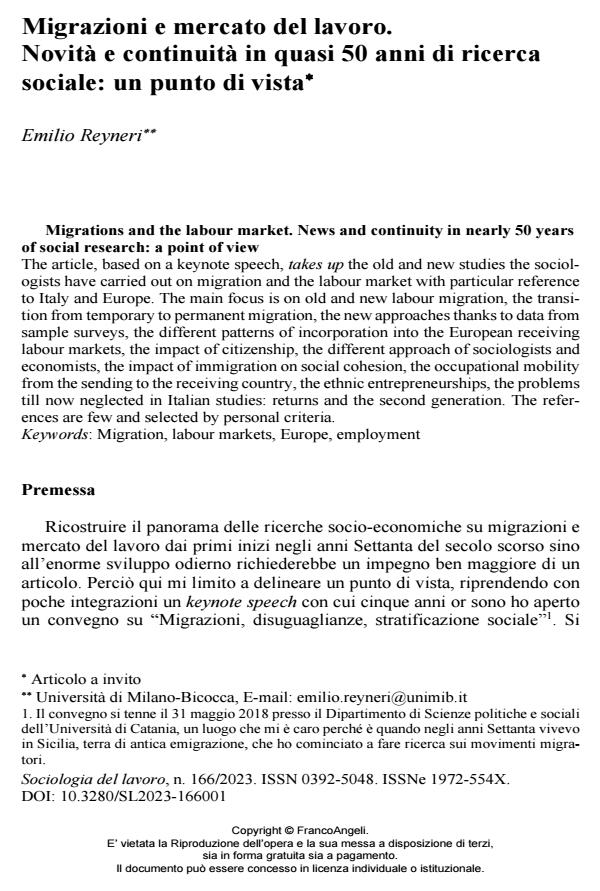Migrations and the labour market. News and continuity in nearly 50 years of social research: a point of view
Journal title SOCIOLOGIA DEL LAVORO
Author/s Emilio Reyneri
Publishing Year 2023 Issue 2023/166
Language Italian Pages 19 P. 7-25 File size 275 KB
DOI 10.3280/SL2023-166001
DOI is like a bar code for intellectual property: to have more infomation
click here
Below, you can see the article first page
If you want to buy this article in PDF format, you can do it, following the instructions to buy download credits

FrancoAngeli is member of Publishers International Linking Association, Inc (PILA), a not-for-profit association which run the CrossRef service enabling links to and from online scholarly content.
The article, based on a keynote speech, takes up the old and new studies the soci-ologists have carried out on migration and the labour market with particular refer-ence to Italy and Europe. The main focus is on old and new labour migration, the transition from temporary to permanent migration, the new approaches thanks to data from sample surveys, the different patterns of incorporation into the Europe-an receiving labour markets, the impact of citizenship, the different approach of sociologists and economists, the impact of immigration on social cohesion, the oc-cupational mobility from the sending to the receiving country, the ethnic entrepre-neurships, the problems till now neglected in Italian studies: returns and the second generation. The references are few and selected by personal criteria.
Keywords: Migration, labour markets, Europe, employment
Emilio Reyneri, Migrazioni e mercato del lavoro. Novità e continuità in quasi 50 anni di ricerca sociale: un punto di vista in "SOCIOLOGIA DEL LAVORO " 166/2023, pp 7-25, DOI: 10.3280/SL2023-166001